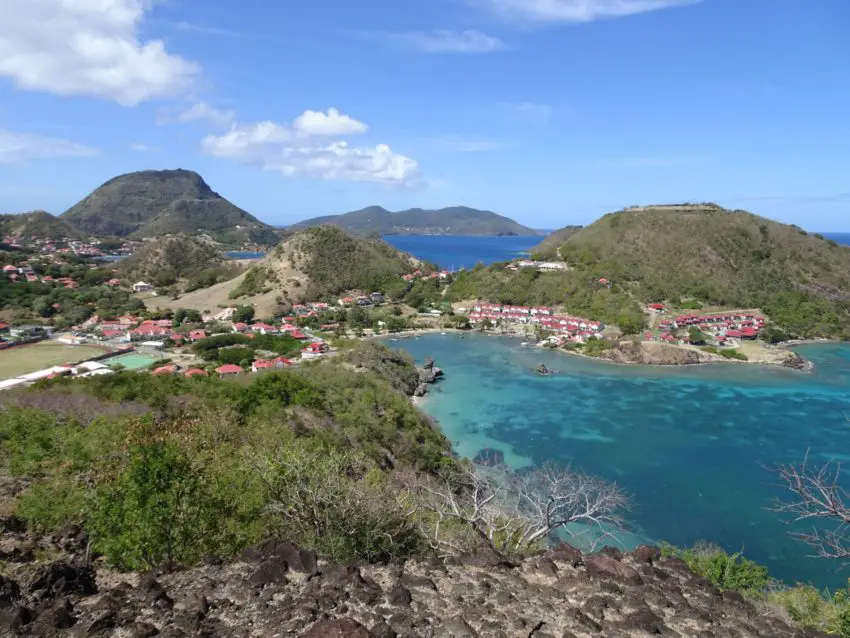If Guadeloupe itself is not enough of a tropical island paradise for you, I highly recommend you get yourself to the Îles des Saintes. This small archipelago off Basse-Terre’s southern coast is basically Guadeloupe in miniature and home to some of my favourite beaches in the region, as well as a cute village capital with a welcoming vibe.
All in all, I found the Îles des Saintes to be perfect for a few days of relaxation and laid-back exploration. You can find everything you need to know about visiting these enchanted isles in my guide.
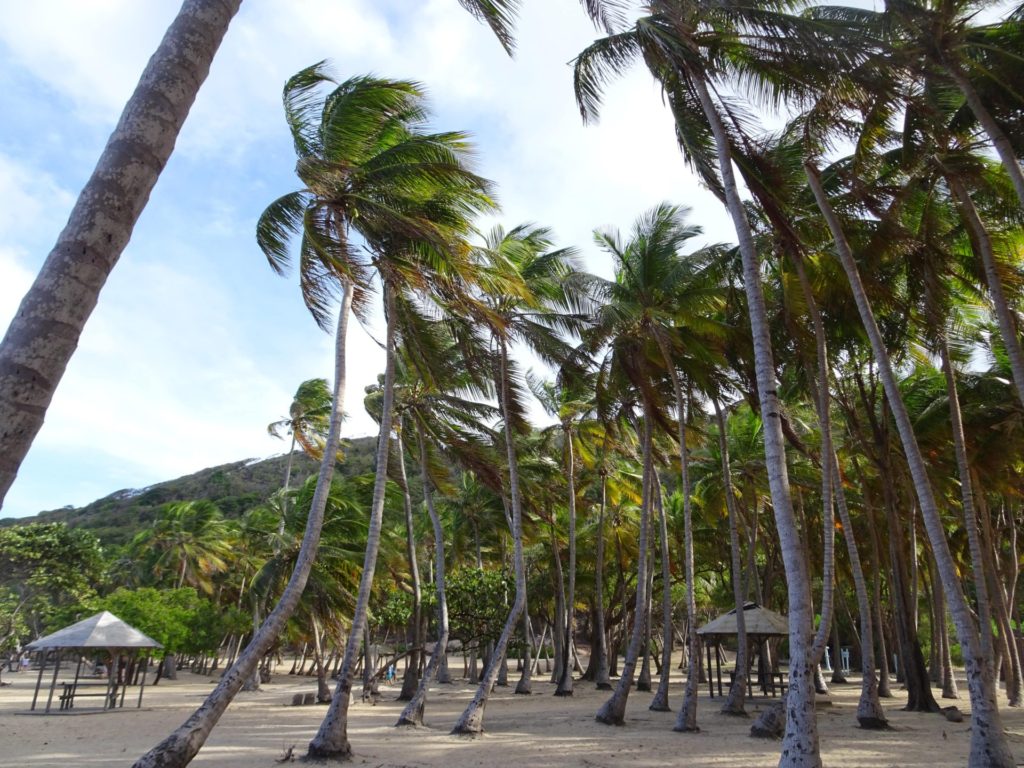
This post may contain affiliate links, and I might earn a small commission at no additional cost to you. For more info, click here.
What to See and Do on the Îles des Saintes
There are two main islands: the more developed Terre-de-Haut in the east and the less-visited Terre-de-Bas in the west of the Archipelago. Both of them can be reached by ferry from Guadeloupe’s main island, although connections to Terre-de-Haut are much more frequent.

Îles des Saintes Hotel Tips
Budget: Les hamacs aux Saintes or Chez Brigitte et Pierrot (Tel. +590 995297)
Midrange: Le Marjulem
Luxury: Hôtel Bois Joli (pictured)
.
There’s also a boat service connecting the two islands. The tiny Ilet à Cabrit lies in the bay north of Terre-de-Haut and requires private transport or a hired boat to reach.
In the two days I had on the islands, I was only able to explore Terre-de-Haut, the main island of the archipelago, which is the focus of this post. Originally, I was planning on also exploring Terre-de-Bas, the other big island in the group, but the couple running my guesthouse advised me against it, as they thought it would be too much for two days.
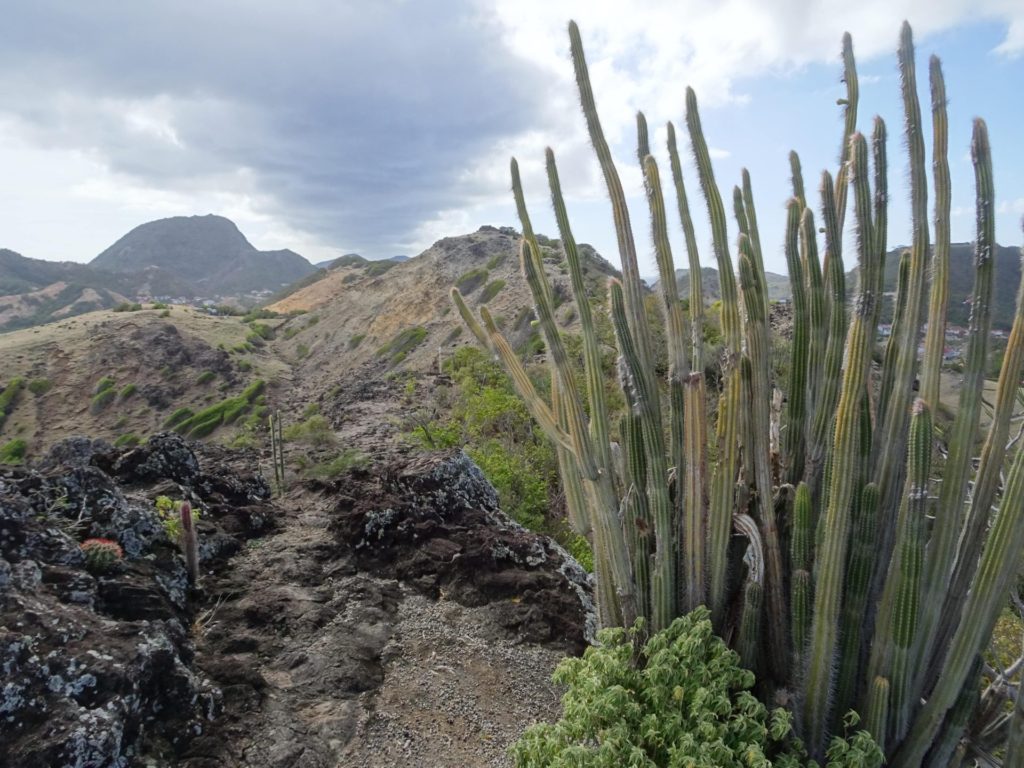
They were absolutely right – I needed both days to explore everything on Terre-de-Haut. Therefore, I’d recommend to only visit Terre-de-Bas or Ilet à Cabrit only if you have three days or more on Les Saintes, so you can properly enjoy your time here without rushing too much.
Le Bourg, the Small Main Village
The cute island capital Le Bourg will be your entry point to Terre-de-Haut, as it is where the ferries from Trois-Rivières or Pointe-à-Pitre land. It’s a pleasant village full of tiny alleyways and cute houses with pretty gardens.
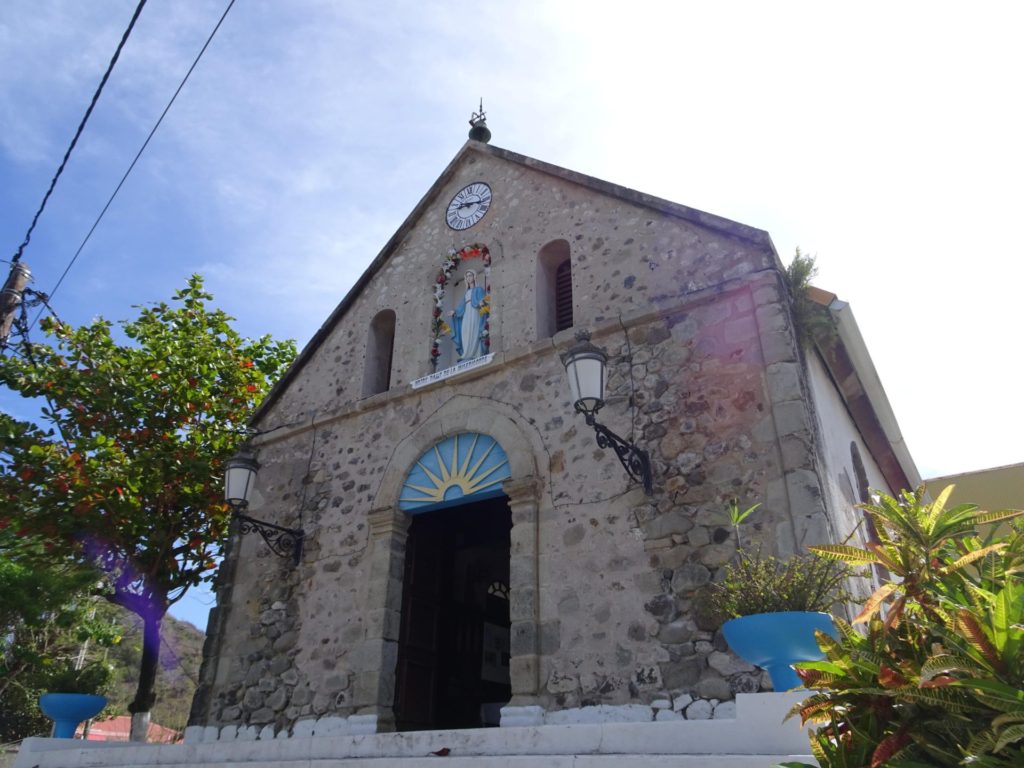
The quarter Le Mouillage near the harbour has the highest concentration of historical architecture. Check out the quaint Town Hall (Mairie) at Place Hazier-du-Bousson, which is picturesquely dotted by Flamboyant trees.
The small Church of Notre-Dame de l’Assomption, slightly north of the square, is also worth a peek, especially for its unusual statue of the Virgin Mary and Baby Jesus framed by the hull of an old fishing boat. If you follow the coast west to the end of the village, you’ll come across the Batterie de la Tête Rouge, the remains of a 19th-century fortification. Just walk into the direction of the red-and white painted radio tower to find it.
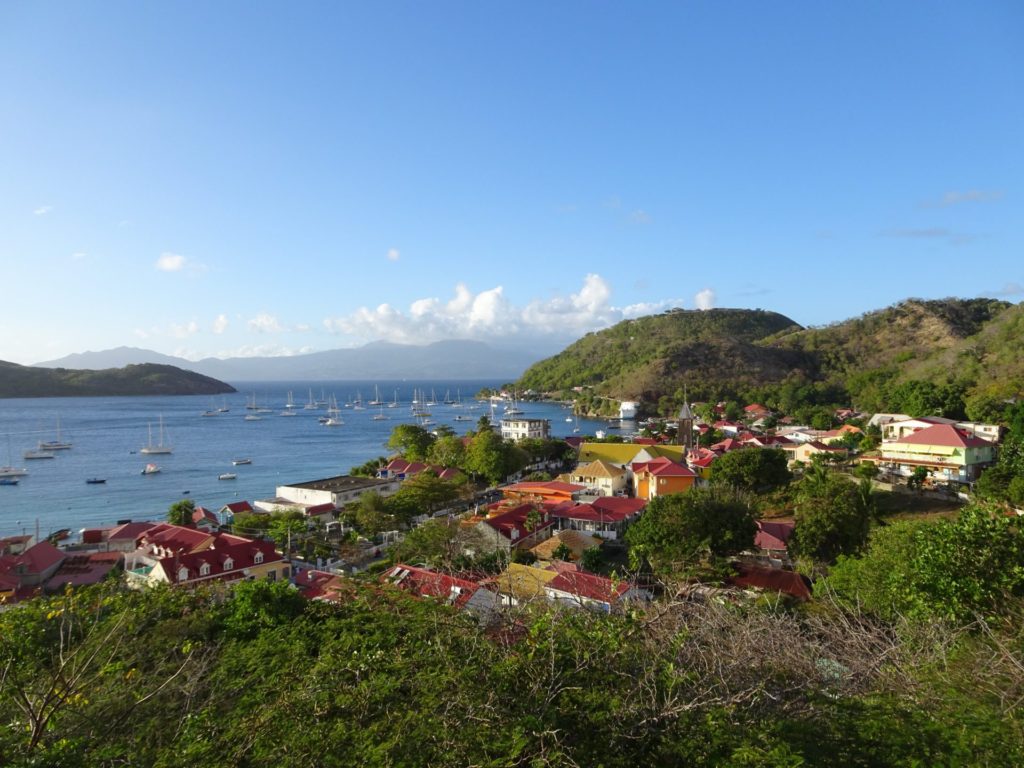
If you turn south east at the Place Hazier-du-Bousson and follow the road to the southern coast, you’ll come across a set of stairs winding up to La Calvaire, a small viewpoint with a crucifix, that offers nice views of the village and bay and is a great place to watch the sunset. The small blue altar with a statue of the Virgin Mary is the Chapelle des Marins, a chapel dedicated to sailors lost at sea.
It you return to the main road and continue further south-east, you’ll come across Cimetière Marin, the sailors cemetery, which is peacefully located amid palm-trees. A bit further on lies the island’s tiny airstrip, which is located close to the wild Grande-Anse Beach, which is a cool place to relax for a bit but not for a swim due to heavy undertows.
Fort Napoléon des Saintes
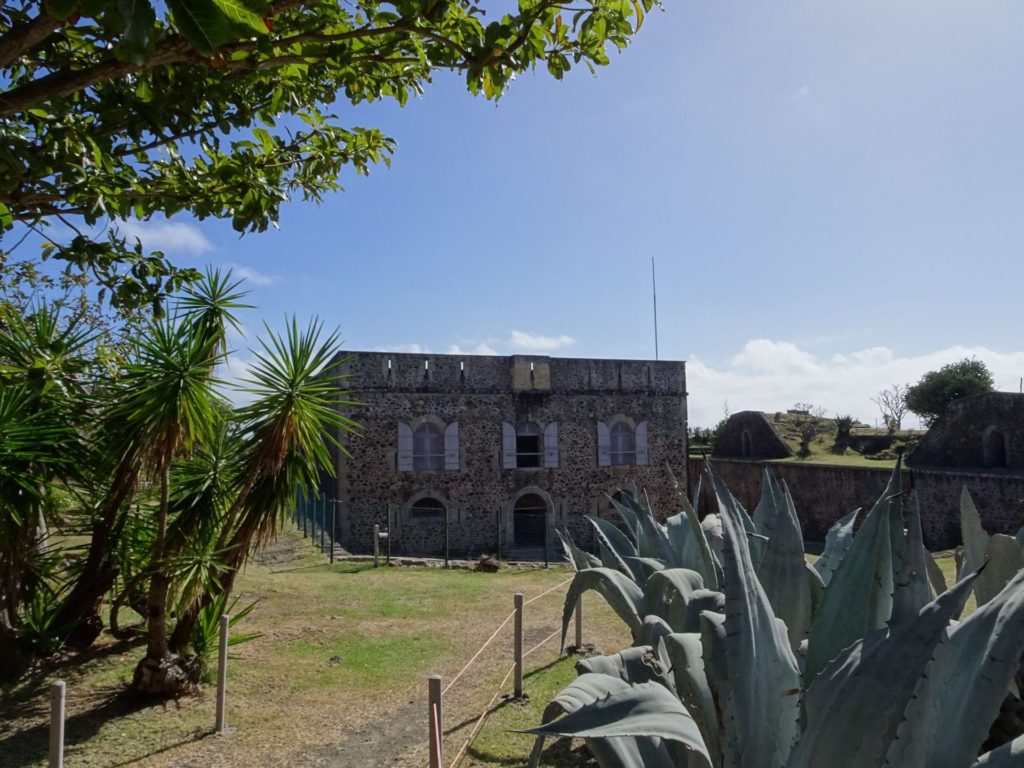
The historic Fort Napoléon wasn’t built by orders of the famous Corse with a height-induced inferiority complex, but by his descendant Napoleon III., and got its current form in the mid-19th century. It contains both exhibitions explaining the construction and usage of the fort itself as well as a small museum detailing the history of the island (Spoiler Alert: lot’s of fishing going on).
The garden contains some giant Cacti and is a nice place for a stroll (or for a break if you hiked up to the fort in the noon-sun). It’s located on the hill at the northern end of the big bay near Le Bourg. The entrance fee is 5€.
Plage de la Pompierre
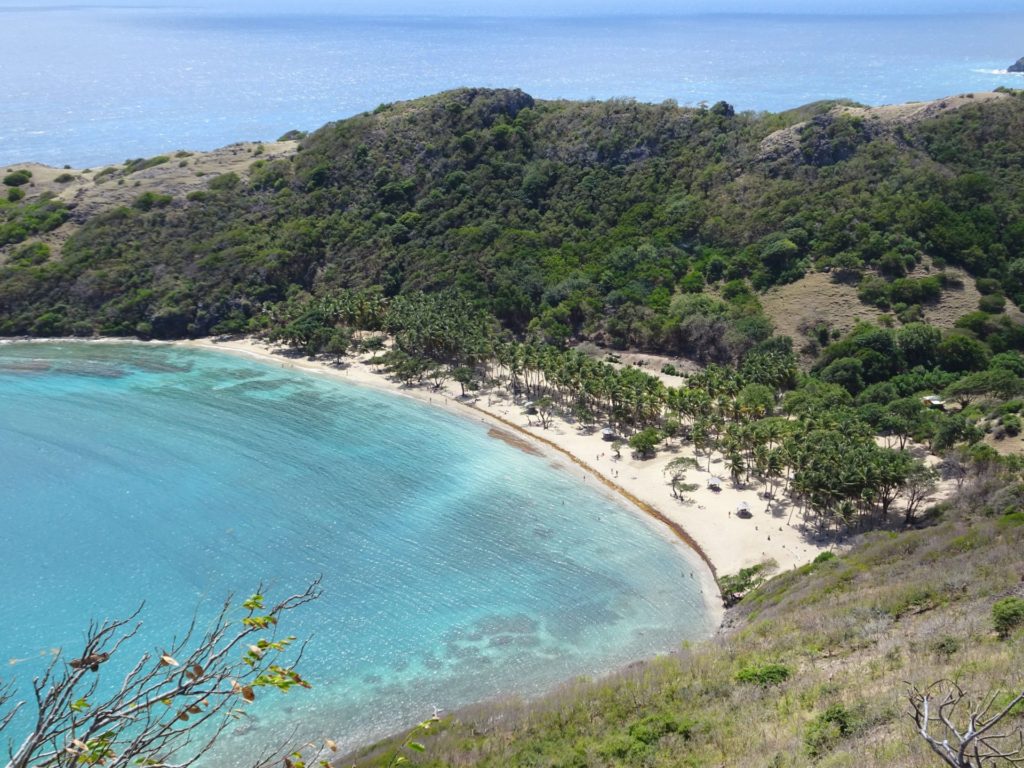
For me, this long stretch of white sand dotted by countless coconut palms is the most beautiful beach on Terre-de-Haut and also the prettiest that I’ve come across on Guadeloupe in general. I suggest you come early or late to enjoy it without the crowds (I was here at around 5PM and it was alright).
Apart from lazing at the beach, you can also hike into the hills on both ends of the bay to get some nice views of the beach from above. The best views can be head from Morne Morel, the hill to the north-west, where you can also find the ruins of Batterie Caroline, another small battery.

If you’re looking for something more adventurous, it’s actually possible to walk to Roches Percées, the small islet you can see across the bay. You’ll have to carry your backpack or any other stuff that you’re lugging around over your head and finding the part of the water that is shallow enough is a bit trial-and-error but it’s fun nonetheless and once you’re over there, you’re very likely to have the islet all to yourself.
Hiking Le Chameau
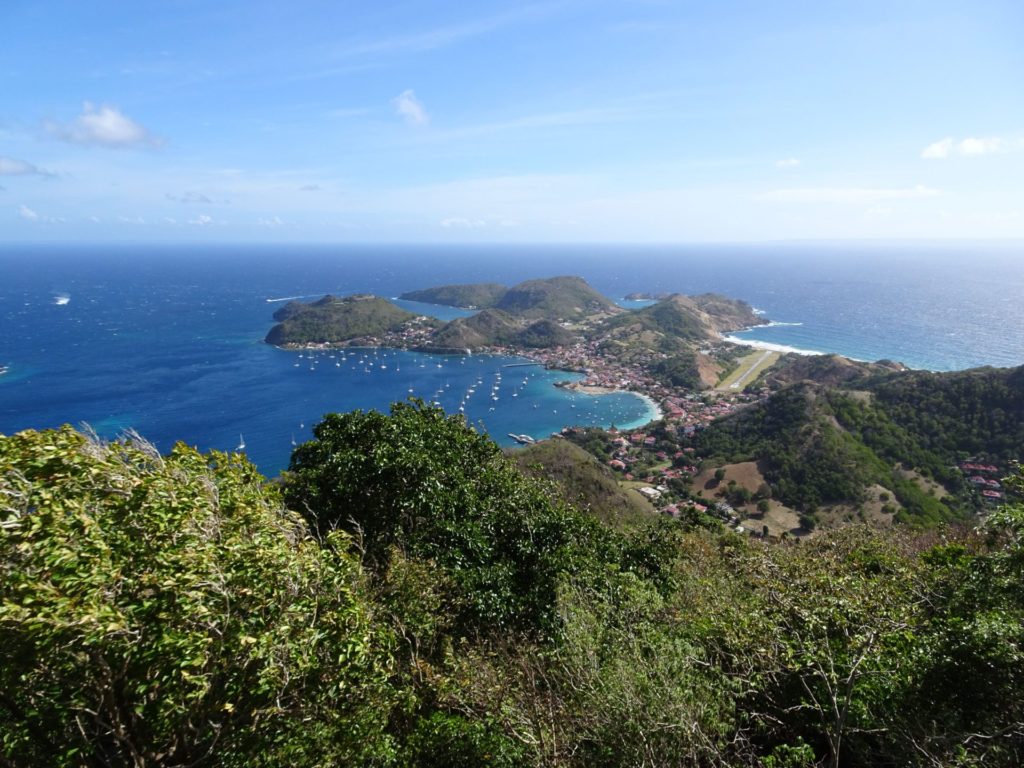
The highest hill on Terre-de-Haut is Le Chameau, in the western part of the island. A walking path traverses it and leads to the ruin of a small watch-tower at its top. I’d recommend going up the eastern slope, and descending down the western slope, where you can continue straight to Plage Figuier for a well-deserved swim. That way, you’ll get the best views east during the first part of the hike up (read: not a lot of trees or shade, so start early and bring sun-screen).
Both the western slope and the top of the hill are wooded, so you won’t have much of a view from there. The inside of the tower apparently used to have a ladder to the upper floor, but nowadays some serious climbing skills would be required to get up there and have a look over the tree-tops. Hiking up and down Le Chameau takes about two hours.
Plage de Pain de Sucre and Plage Figuier
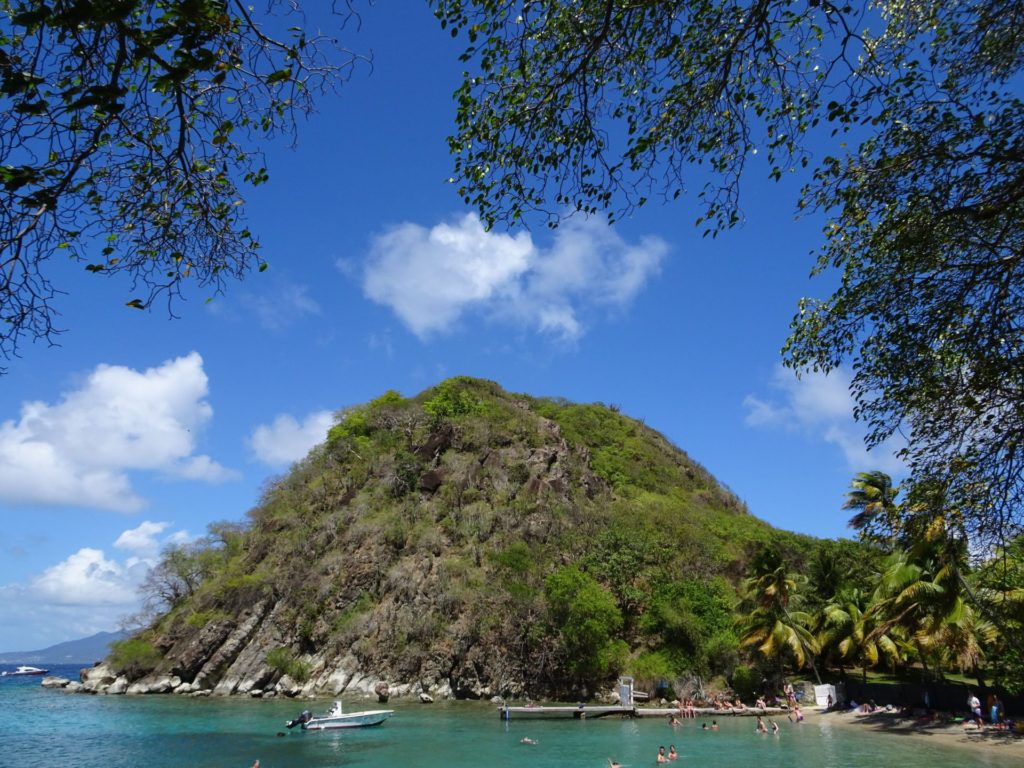
Plage de Pain de Sucre is a small beach is located on the northern coast of Terre-de-Haut a kilometre or so west of Le Bourg (past the ruins of Batty Caroline). It’s quite popular and therefore bound the be full of people, but the impressive rock formation Pain de Sucre on the peninsula north of the bay is worth checking out, even if the comparison to its namesake in Rio might be a bit of a stretch.
If you prefer your beaches a little less crowded, you could check out Plage Figuier, a bit further west on the southern coast of the island. It might not be quite as pretty as its neighbour but it’s certainly more laid-back.
Map of the Îles des Saintes
This map shows the locations of the main sights and beaches mentioned above as well as a range of guest houses and bungalows for rent on these beautiful islands.
Practicalities
How to Get to the Îles des Saintes
There are two options to reach the Îles des Saintes by boat. The shorter, cheaper and more frequent connection starts from the village of Trois-Rivières on the southern coast of Basse-Terre, the western half of the island, which you can reach from Pointe-à-Pitre’s Bergevin Bus Station.
The ferry return trip from Trois-Rivières to Bourg on Terre-de-Haut costs 25€ and takes about half an hour. There’s one departure in the morning and another in the afternoon to as well as from the island. You can check the current schedule here. As the boat is rather small, the trip can get a bit rough, so if you’re prone to sea sickness, take some medication in advance.
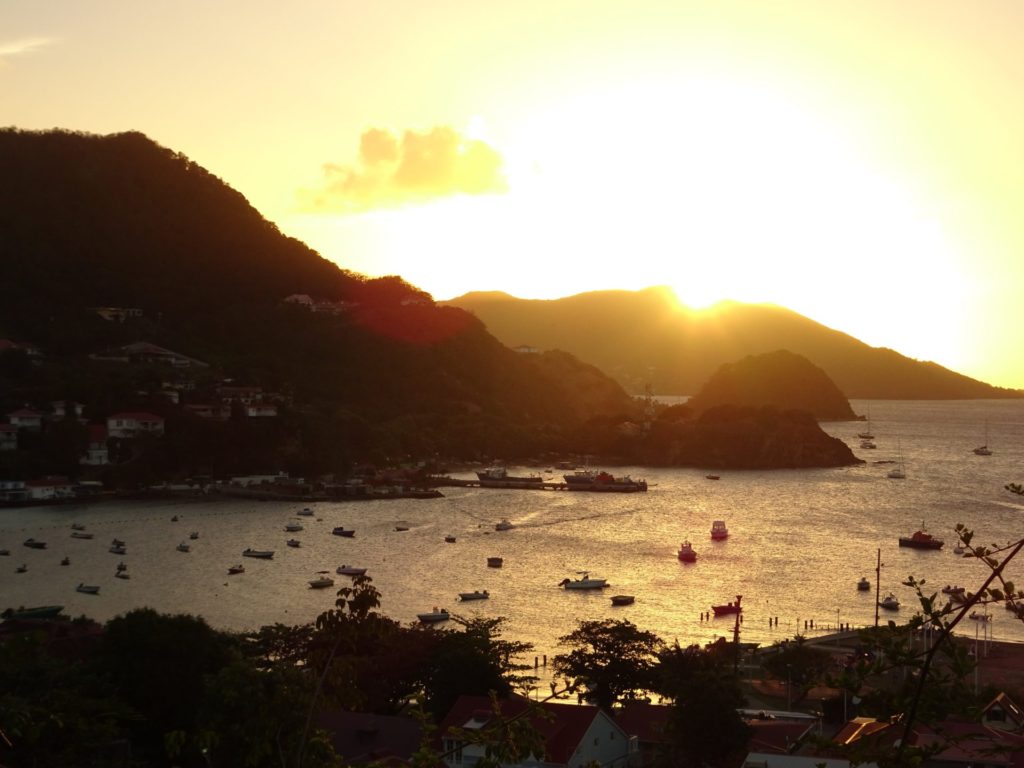
On Wednesday and Friday, the company L’express des Îles has a service from Pointe-à-Pitre to Terre-de-Haut at 8am, with the return ferry leaving at 5.30PM. Check the current schedule here, to make sure The trip takes about an hour and costs 44€ return.
If you’re in a serious hurry (or seriously prone to sea-sickness), Air Caraibes flies down to Terre-de-Haut from Pointe-à-Pitre or Basse-Terre on weekends in about 20 minutes. They can be called at +590 851501 to inquire about the schedule and make reservations.
How to Get Around on the Îles des Saintes
Honestly, Terre-de-Haut is small enough to be explored on foot, which is exactly what I did. There are also a few places in Le Bourg renting bicycles and scooters, but in my opinion, the hilly interior makes walking by far the best option.
Where to Stay on the Îles des Saintes
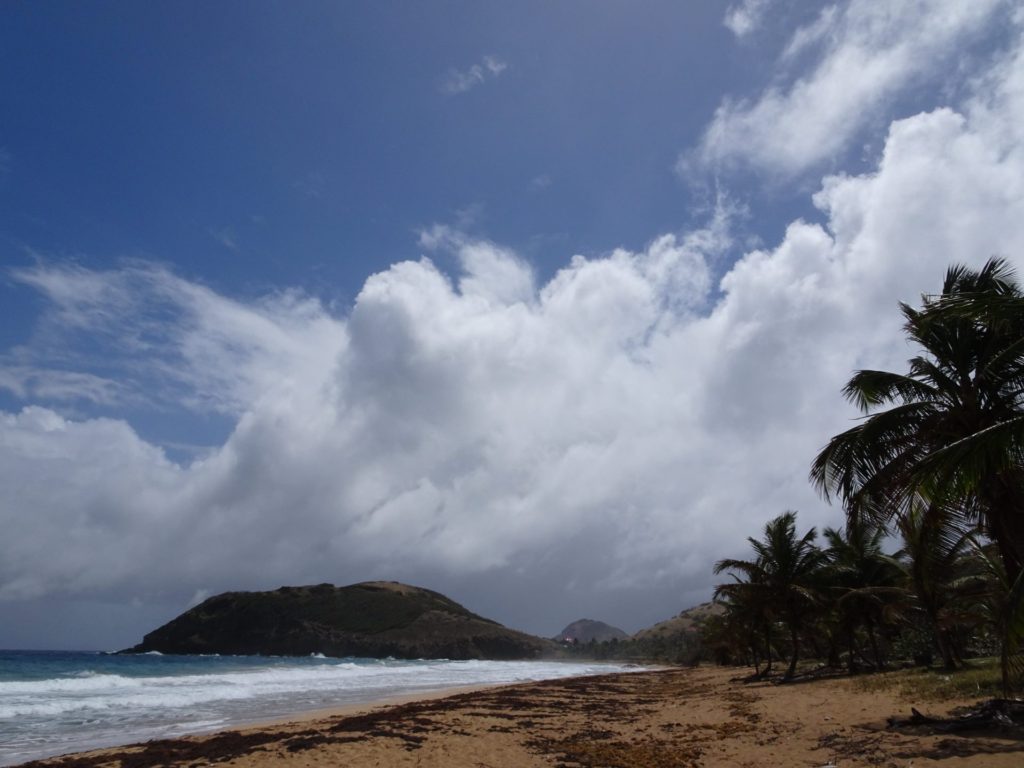
I stayed in the small Guesthouse Chez Brigitte et Pierrot in Le Bourg, close to the city hall, where you can get rooms with shared bathroom for about 32€. It’s basic but clean and beautifully located plus the eponymous couple running the place is super friendly and helpful. You can call them to make reservations (It’s easier if you speak a little French – Tel. +590 995297).
Another well-rated budget option would be Chez Caroline et Richard a little further to the West near the beautiful Plage de Pain de Sucre. There are countless other options, most of them in the mid-range price sector. Check out the map above for more places to stay.
Where to Eat in the Îles des Saintes
Fish and seafood are the stars of the modest local culinary scene and there are quite a few restaurants along the bay serving the catch of the day. If you’re on a budget, I recommend going during lunch-time, when the prices are lower. I particularly liked Restaurant La Toumbana, which is located west of the Cimetière Marin.
If you have to save some money, there are a few places selling cheapish sandwiches in the vicinity of the church in Le Bourg. There’s also a small supermarket close to the church on the way to Plage de la Pompierre.
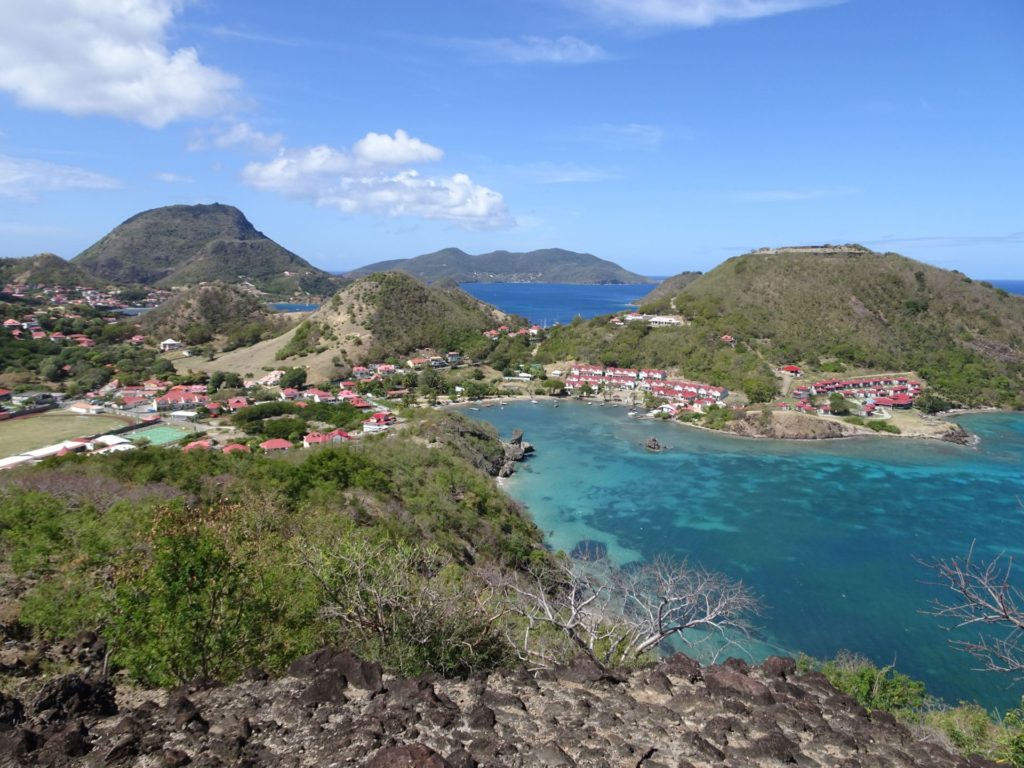
One thing you should check out, while you’re on the island are the local specialty Tourment’s D’Amour, small pastries filled with coconut cream. The taste exactly as heavenly as they sound:-)
